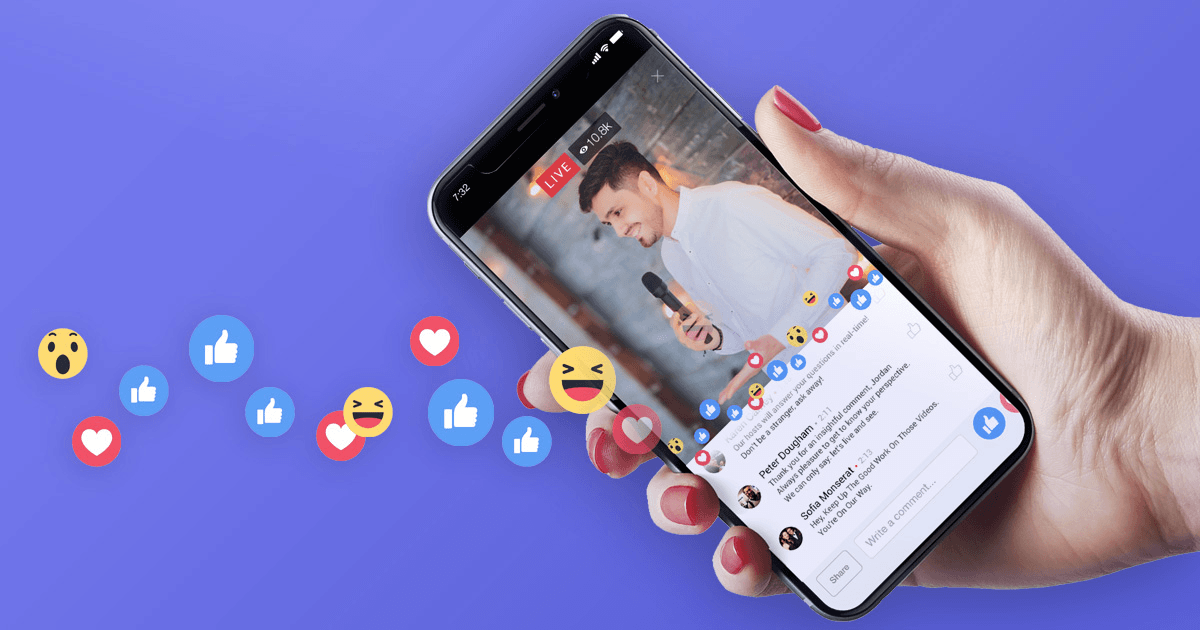
Best Niche Marketing Strategy Tips and Examples for 2022
March 2, 2022
How to Use Facebook Live for Business in 2022: A Step-by-Step Guide
March 16, 2022Marketing Automation in 2022
The year 2021 has come to an end, and what a year it was. Even though there was still a long way to go, the world was in recovery mode. The last two years have put global brands to the test and changed their perspective on marketing in general. Closer to home, we saw the marketing automation industry expand significantly in response to increasing demand from businesses all over the world to automate their marketing workflows in order to better engage and retain their users. We've compiled a list of the top 9 marketing automation trends for 2022.

The Marketing Automation Software market is expected to grow at an annual rate of 8.55 percent through 2022, with a market capitalization of US $6.4 billion by 2024.According to Emailmonday, over 51% of businesses already use marketing automation. More than 58 percent of businesses are expected to implement it.
In 2022, it will all be about creating unique, engaging experiences that add value to the evolution of user engagement to make user engagement feel like a super-connected, always-online consumer, and Marketing Automation will act as a catalyst in making it all happen.
So, without further ado, here are the top trends influencing and dominating the marketing automation industry this year.
1) Marketing Automation will continue to expand through 2022.
The number of marketing automation vendors increased by 27% in 2018, indicating a burgeoning market demand. Seventy-five percent of marketing professionals are already incorporating at least one type of MarTech into their strategy. However, many marketers will continue to struggle to secure a sizable budget.
2) Personalized content will triumph.
In 2022, context will increasingly be the driving force behind business growth. Customers expect relevant experiences from the brands with which they interact. Understanding user preferences and purchasing habits will assist brands in moving beyond segmentation and personalization. The challenge will be in creating and executing hyper-personalized campaigns at scale for a large user base.
3) Intelligent Marketing Automation: Machine Learning + AI-Enabled Platforms.
Marketers will begin to use machine learning in content creation in 2022. Machine learning and data will collaborate to increase engagement efficiency. A commercially viable AI + Machine Learning end-all, be-all solution is still under development. Netflix and Starbucks are already using this technology in their recommendation engines.
4) Chatbots will continue to make headlines.
Chatbots are essentially computer programs that have been taught to understand and mimic human conversation. According to research, more than 60% of Messenger users who received a chatbot ping engaged with the message. Brands will soon be able to integrate chatbots with WhatsApp's API.
5) Social Media Marketing Automation.
The amount of time spent on social media has risen from 135 minutes in 2017 to 143 minutes in 2019. Brands want an even bigger slice of your social screen time in 2022. As brands try to reach out to the right audiences, smart automation of social media marketing will be on the agenda.
6) Predictive CLV Lifecycle Marketing (Customer Lifetime Value).
Brands will seek to shift from a static to a more dynamic, behavioral approach to segmenting customers. Brands will be able to identify high, medium, and low CLV users using advanced segmentation. Marketing Automation Software will make it simple for brands to create highly accurate user profiles.
7) User retention will be critical to the growth of the business.
Brands will work hard to understand the journeys of anonymous users who haven't made a purchase on their site. Users who are pleased with a product or service will spread the word about it to their friends and family. According to Forrester, brands that provide a better customer experience will grow their revenue five times faster.
8) A mobile-first strategy.
In 2022, mobile marketing will be a major growth driver for businesses. Marketers will strive to develop a comprehensive mobile engagement strategy for brands. Google's mobile-first index, which will be released in 2020, will force many businesses to optimize their websites for mobile use. Mobile advertising spending is expected to increase by 8.5 percent year on year.
9) Integrated Cross-Channel Marketing will triumph.
Using two or more communication channels increases engagement by more than 166 percent, according to research. Marketers will take advantage of this to keep their customers engaged across multiple touchpoints. A multi-channel campaign will have multiple layers of user engagement and action, and data intelligence will be required to identify key insights.
To summarize
Your user is no longer willing to wait and will switch to a better-suited competitor without hesitation. This is why, in 2022, marketing automation will play a critical role in business, as brands scramble to provide a more engaging, targeted, and personalized experience for their users.
Source: Webengage

